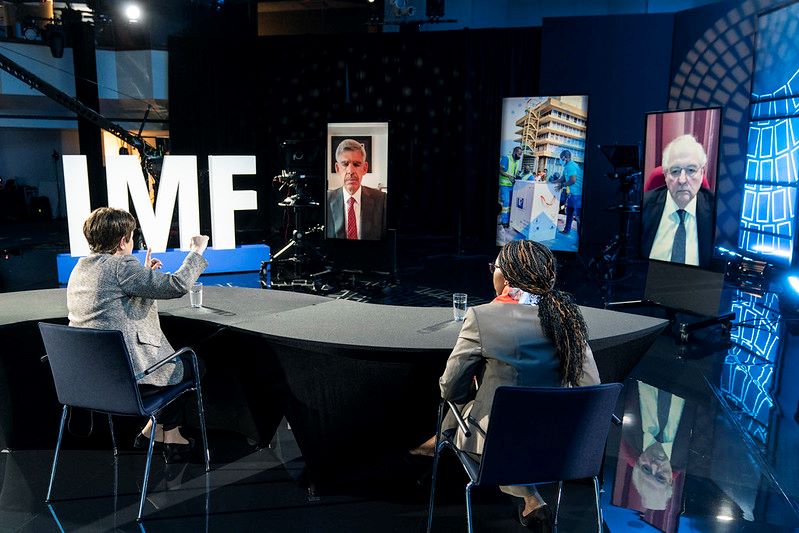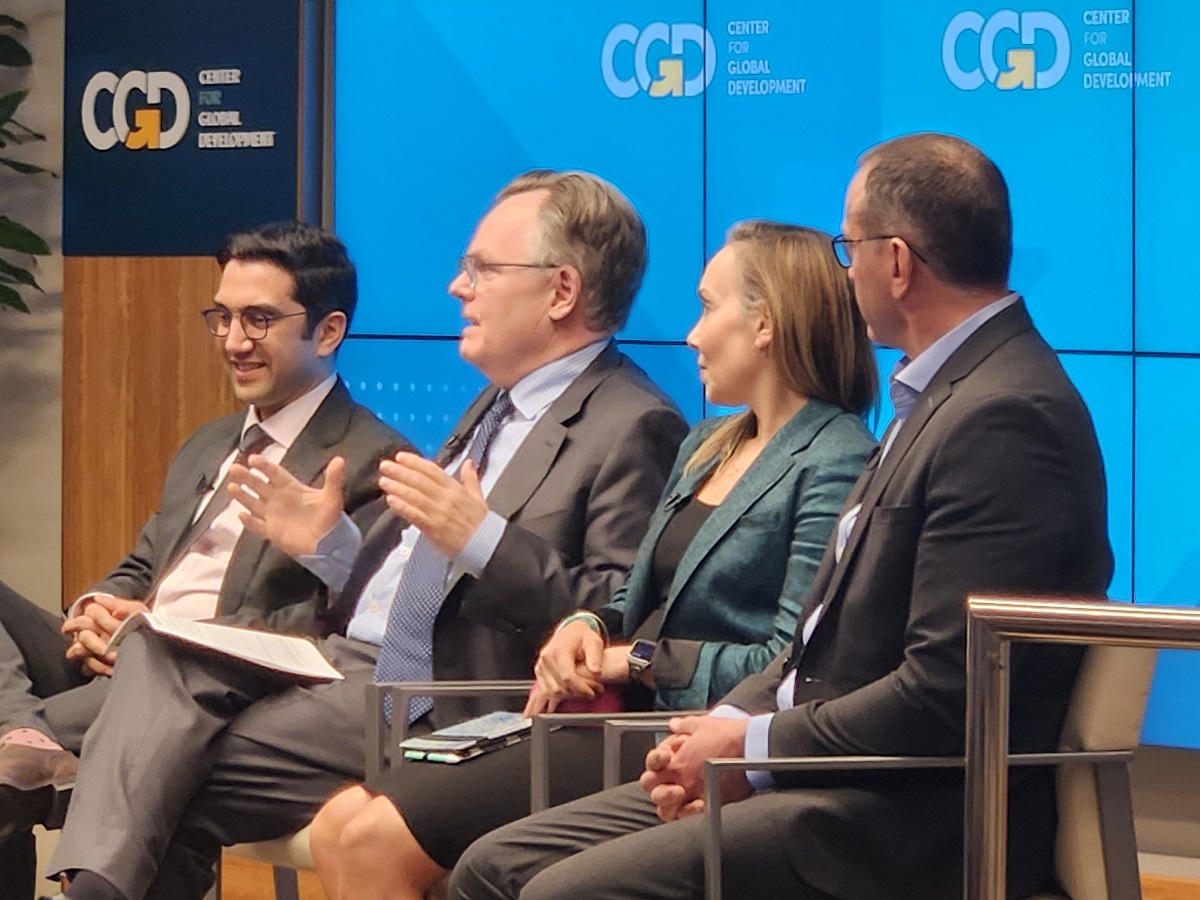Recommended

Blog Post
This piece was first published by Project Syndicate.
With many developing countries heading toward debt crises, the immediate priority for the international community is to avert more Sri Lanka-style meltdowns. That will require reforms to an outdated global debt-restructuring framework, as well as better use of existing institutions and policy instruments.
WASHINGTON, DC – Like the United States and other rich countries, developing countries had little choice but to borrow and spend heavily to deal with COVID-19. Poor countries’ already-high debt levels ballooned to a 50-year peak as a result. Then came the Russian invasion of Ukraine, which caused record increases in food, fuel, and fertilizer prices. And now that rising inflation has prompted interest-rate increases in advanced economies, developing countries’ currencies are declining in value, adding to their debt woes.
In March, the World Bank estimated that a dozen developing countries could default on their debt over the next 12 months. The warning signs are everywhere. Investors have pulled $50 billion from emerging-market bond funds this year, and the debt of nearly one-third of these countries is trading at distressed levels. Without market access, many governments will struggle to roll over their external debt. According to our own calculations, low-income countries alone face nearly $15 billion in Eurobond rollovers over the next three years.
This year’s massive global food crisis has made matters worse. A spate of sovereign-debt crises could trigger humanitarian emergencies in the developing world, as governments run out of foreign-exchange reserves with which to fund basic food imports, as happened in Sri Lanka.
The Limits of Half Measures
The task now is to prevent these debt crises from morphing into full-blown development catastrophes. While the international community did take some important steps to get ahead of the debt spiral early on, these efforts ultimately delivered more bark than bite. There were announcements and resolutions, but no meaningful debt reduction in the developing world.
For example, in November 2020, the G20 launched the Common Framework for Debt Treatments, which aimed to provide poor countries with a roadmap for debt write-downs. This new mechanism briefly offered some hope, because it even included China, which has historically preferred to negotiate debt restructuring bilaterally. But the framework’s sponsors failed to set timelines for negotiation milestones or concrete guidelines on “comparability of treatment” among different types of creditors. With no agreement on the endgame, negotiations have predictably dragged on.
Two years later, only three countries (Chad, Ethiopia, and Zambia) have applied for debt relief under the framework, and two of those negotiations have stalled. These three countries thus have become a cautionary tale for their highly indebted peers. In the absence of an expeditious restructuring process, countries that will likely need some relief down the line—from Ghana to Laos—will be reluctant to come forward for fear of finding themselves in a costly limbo: unable to access new external financing as they continue to service their external debt.
The fundamental problem is that the existing international financial architecture—long overseen by the International Monetary Fund’s major shareholders—has failed to adapt to the new debt landscape. One persistent challenge is China. Now a major creditor to developing-country governments, it has not put a premium on transparency or the economic sustainability of its loans (many of which are for major infrastructure projects under its Belt and Road Initiative).
In addition, many more developing countries have gained access to international capital markets, owing to their success in managing macroeconomic stability and to the benign global interest-rate environment that prevailed until recently. The situation today is thus quite different from the Heavily Indebted Poor Country Initiative at the turn of the century, when major donor countries and the international financial institutions stepped in to issue concessional loans to poor countries. And nor is it like the Latin American debt crisis of the 1980s, when Wall Street banks were the big creditors and the US government was a key player in the debt resolution.
One lesson from these past episodes is that it is much easier to build a debt relief initiative when major creditors are of the same mind and can easily coordinate. Corralling bondholders and new non-traditional lenders like China into a collective-action regime is much more difficult, especially at a time when multilateralism and trust between major powers is waning.
What Is to Be Done?
The immediate priority for the international community is to prevent debt-distressed developing countries from suffering Sri Lanka-style economic and social breakdowns. The focus should be on giving countries financial breathing room during what can often be a protracted negotiation and restructuring process.
There is a way to do this. First, the G20 could announce that countries would be granted an immediate suspension of debt service (by all creditors, including bondholders and China) upon applying for relief under the Common Framework. This would both help stabilize the applicant’s economy and incentivize creditors to move expeditiously. The process could be modeled on the Debt Service Suspension Initiative, the temporary (and now expired) moratorium on debt service that the G20 launched in May 2020. This time, however, the standstill would need to include the private-sector creditors that overwhelmingly ignored the DSSI. Here, the deal that the Ukrainian government is seeking with its bondholders offers a potential path for others to follow.
Second, IMF shareholders could agree to make financing available for the handful of countries that are negotiating restructurings and face immediate foreign-exchange shortages. The standard rule of thumb is that if the IMF judges a country’s debt to be unsustainable, its program financing is not made available until a negotiated debt restructuring is completed. The point is to avoid moral hazard and ensure that IMF financing is not used simply to bail out creditors. But these negotiations can take a very long time. Zambia, for example, reached a $1.4 billion IMF agreement in December 2021, but it was not cleared to receive the resulting financial support until the fall of 2022.
For countries with an IMF agreement that are also facing immediate financing shortages that limit their ability to import food and other basic goods, the IMF can make some funds available by invoking its Lending into Arrears and Lending into Official Arrears protocols. These allow the IMF to move forward with financing even if the recipient government has not reached an agreement with its creditors, provided that it has put forward a credible restructuring offer. Importantly, such relief can give debtor countries greater leverage in the debt restructuring process itself.
Antonio Gramsci famously quipped that crises occur when “the old is dying and the new cannot be born.” Today’s global debt challenge fits this description. We are in an interregnum (which originally described the period between the death of a monarch and the coronation of a new one). The US—the lead architect of previous global debt relief initiatives—is no longer able or willing to take the lead. But nor does China want that job. Though it is now a top creditor, it remains reluctant to lead on issues requiring global cooperation.
Ultimately, this fragile interregnum risks needlessly increasing the economic costs associated with debt crises. For now, the IMF’s shareholders must empower it to use the full suite of tools at its disposal. Failing that, today’s debt crises could easily morph into humanitarian disasters.
Copyright: Project Syndicate, 2022
Disclaimer
CGD blog posts reflect the views of the authors, drawing on prior research and experience in their areas of expertise. CGD is a nonpartisan, independent organization and does not take institutional positions.






